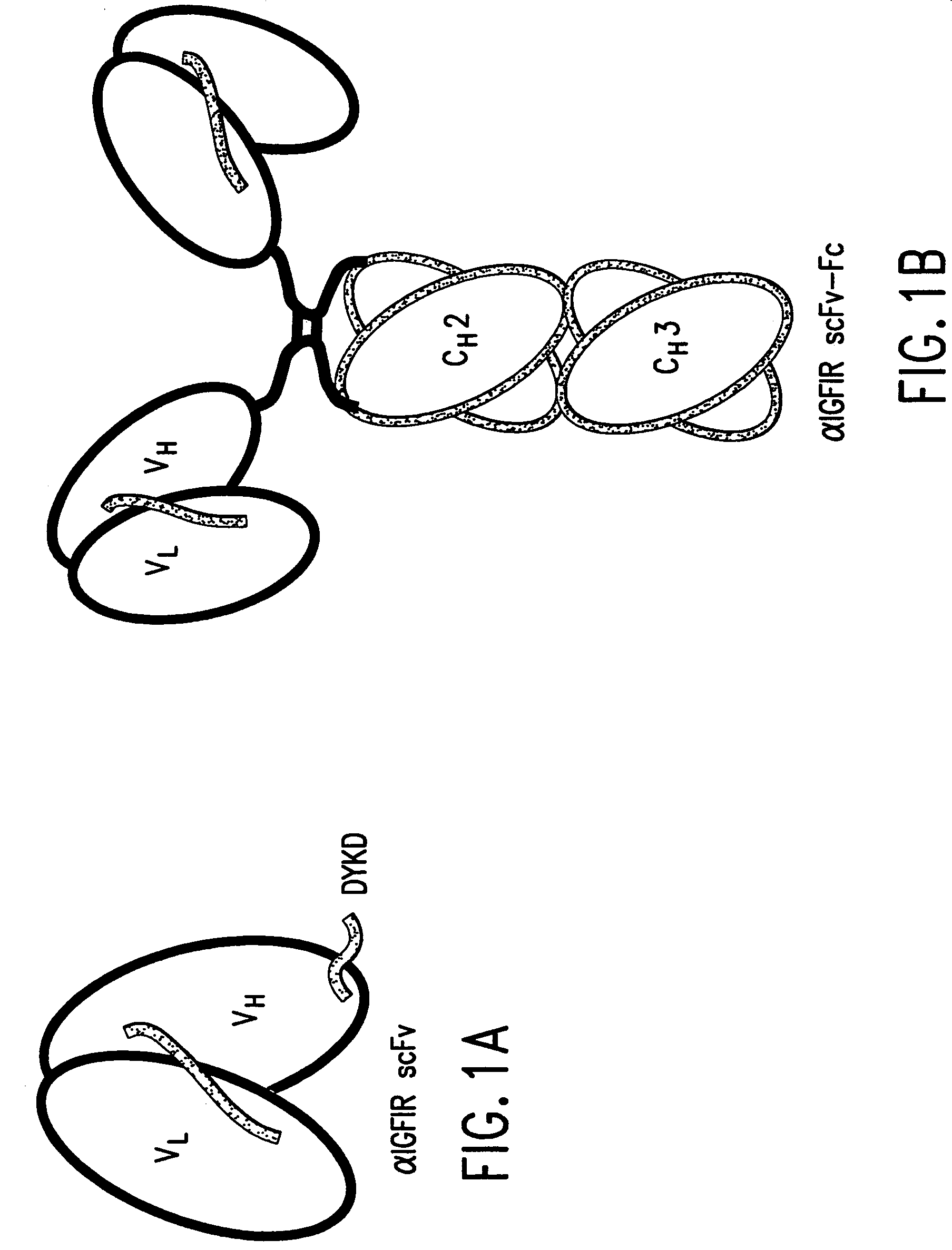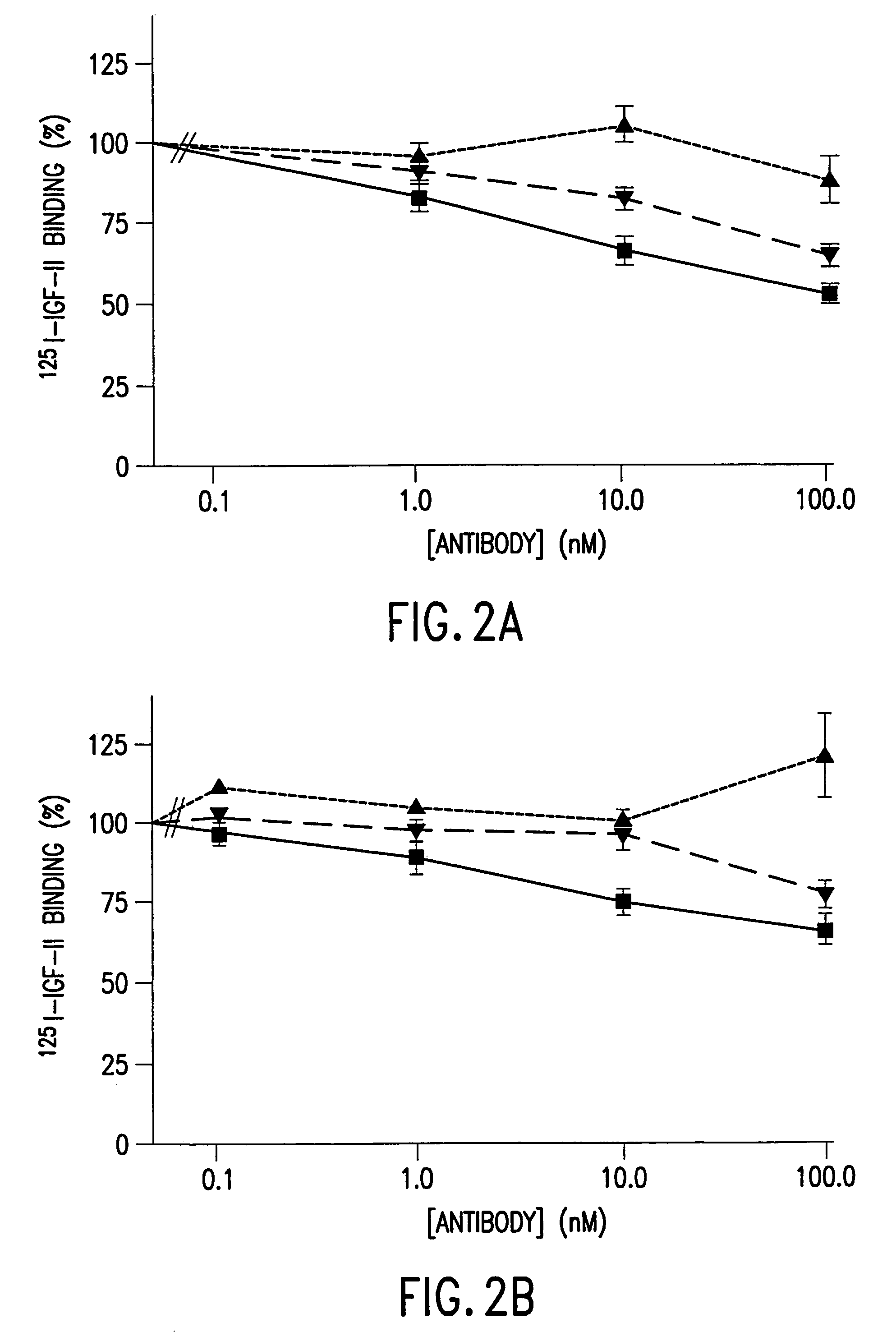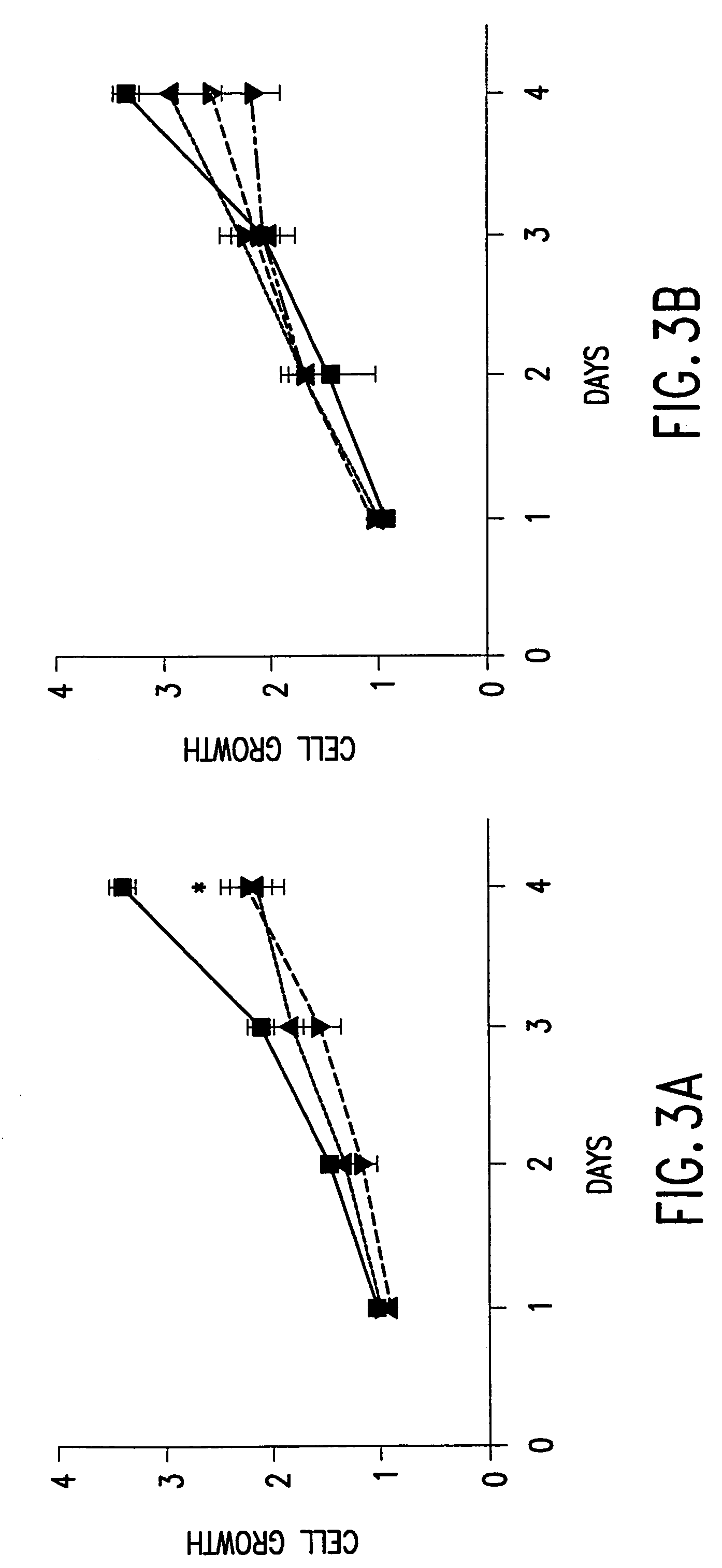Single-chain antibodies against human insulin-like growth factor I receptor: expression, purification, and effect on tumor growth
a technology of insulinlike growth factor and single-chain antibodies, which is applied in the field of hormone dependent cancer treatment, can solve the problems of limited ability of monoclonal murine antibodies to inhibit estrogen dependent tumor cell growth in vivo, limited ability of monoclonal murine antibodies to optimize their effects, and relative complexity limitation of the ability to manipulate the antibodies
- Summary
- Abstract
- Description
- Claims
- Application Information
AI Technical Summary
Problems solved by technology
Method used
Image
Examples
example 1
Cloning of 1H7 Variable Domains by RT-PCR.
[0031]Heavy and light chains of mouse monoclonal antibody 1H7 (Li, S. et al; Biochemical and Biophysical Research Communications, 196, 92-98, 1993) were separated by sodium dodecyl sulfate / polyacrylamide gel electrophoresis (SDS-PAGE; 12.5% polyacrylamide gel), under reducing conditions, blotted onto a polyvinylidene difluoride membrane, and subjected to N-terminal amino acid sequence determination by Edman degradation. Degenerate oligonucleotides, used as upstream primers, were synthesized on the N-terminal sequences of the heavy and light chains of 1H7 while the constant region oligonucleotides for the downstream primers were designed and synthesized according to the published nucleotide sequences. Primers (Table 1) containing the EcoRI site were used to amplify the heavy- and light-chain variable regions (VH and VL, respectively) from 1H7 poly(A) rich mRNA by reverse transcriptase polymerase chain reaction (RT-PCR). PCR products were liga...
example 2
Design of αIGF-IR Antibodies.
[0034]Two soluble forms of 1H7-based αIGF-IR antibodies, scFv and scFv-Fc, were designed as schematically presented in FIG. 3. ScFv is a monovalent antibody and has an expected Mr of 27 kDa. ScFv-Fc is a divalent antibody that contains the human IgG1 Fc domain and has an expected Mr of 120 kDa.
[0035]The gene encoding the αIGF-IR scFv was constructed using the N-terminal signal peptide derived from the mT84.66 light chain, VL DNA, an oligonucleotide encoding the linker peptide (GGGGSGGGS)2 (SEQ ID NO: 5), VH DNA, and a C-terminal tag (including DYKD; SEQ ID NO: 22]), and assembled using splice-overlap extension PCR. The resulting DNA encoding αIGF-IR scFv is shown in FIG. 2 (SEQ ID NO: 2). The αIGF-IR scFv construct was cloned into pcDNA3 (Invitrogen, San Diego, Calif.), containing the cytomegalovirus promoter and neor selection marker (pcDNA / αIGF-IR scFv).
[0036]To construct the gene encoding αIGF-IR scFv-Fc, a SalI fragment containing the human IgG1 Fc (...
example 3
Cell Culture, Transfection and Purification of αIGF-IR scFv or αIGF-IR scFv-Fc.
[0037]Murine myeloma Sp2 / 0 cells were transfected with pcDNA / αIGF-IR scFv by electroporation, and incubated at 37° C. for 3 days in a humidified 5% CO2 atmosphere. On day 4, cells were collected, counted and placed in 24-well plates (105 cells / well) in regular medium containing 400 μg / ml G418. Murine myeloma NS0 cells were grown in selective medium consisting of L-glutamine-free Celltech DME (JRH Biosciences, Lenexa, Kans.), dialyzed fetal calf serum (Gibco / BRL, Gaithersburg, Md.), and glutaminase synthase supplement (JRH Biosciences, Lenexa, Kans.). Murine myeloma NS0 cells were stably transfected with pEE12-1 / αIGF-IR scFv-Fc by electroporation and transferred to non-selective culture medium in a 96-well plate (50 μl / well), and incubated overnight. The next day 150 μl of selection medium was added to each well, and the cells were incubated for three weeks until discrete surviving colonies appeared.
[0038]...
PUM
| Property | Measurement | Unit |
|---|---|---|
| pH | aaaaa | aaaaa |
| pH | aaaaa | aaaaa |
| flow rate | aaaaa | aaaaa |
Abstract
Description
Claims
Application Information
 Login to View More
Login to View More - R&D
- Intellectual Property
- Life Sciences
- Materials
- Tech Scout
- Unparalleled Data Quality
- Higher Quality Content
- 60% Fewer Hallucinations
Browse by: Latest US Patents, China's latest patents, Technical Efficacy Thesaurus, Application Domain, Technology Topic, Popular Technical Reports.
© 2025 PatSnap. All rights reserved.Legal|Privacy policy|Modern Slavery Act Transparency Statement|Sitemap|About US| Contact US: help@patsnap.com



